
This is a guest post from Jimmy Rodela of Guild of Bloggers. Jimmy is a freelance writer and digital marketer who has contributed to SEMrush, Search Engine People, and Business.com.
For your keyword research to pay dividends in your marketing campaigns, you have to find keywords that align with the purchase intent of your audience.
Admittedly, finding the right keywords is where it gets tricky. But with the right tools and the technical know-how, it shouldn’t be that hard.
This article will show you how to do extensive keyword research and come up with profitable keyword suggestions in just 30 minutes.
Ready? Start the clock and let’s begin.

Start with a Reliable Keyword Research Tool
There’s a ton of keyword research tools available out there. The problem? The really excellent ones require you to pay quite a bit of money before you can enjoy their full functionality.
However, there are some free tools like Ubersuggest (a tool from Neil Patel), which offers full functionality easy usability without even having to register.
Just go to the website’s front page and you’ll see the search field immediately. Just enter your seed keyword and let’s get started.
3 Steps to Keyword Research
1. Refine Your Seed Keyword
Seed keywords are the keywords you think you should rank for. Ideally, you’ll have a good idea of these since you’re an expert in your industry and on your business.
Then, you need to expand your seed keyword into longer variations of long-tail phrases. The goal here is target keywords with less competition. The less competition there is, the more conversions you can get.
Let’s pretend you’re a bicycle repairman and go with “bicycle repair” as your seed keyword.
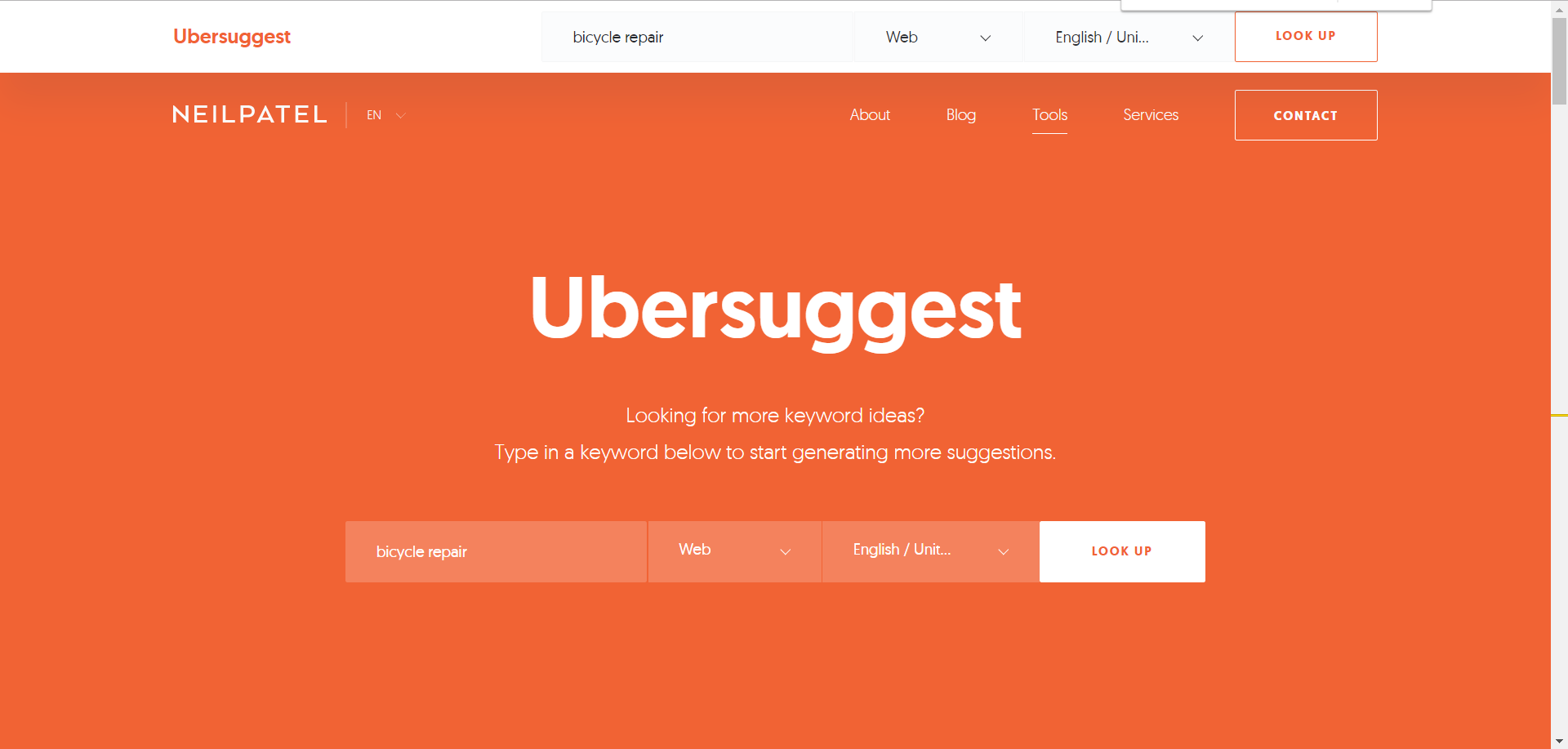
After clicking Look Up, you’ll be provided with keyword metrics such as volume (search volume), CPC (cost per click), and competition (level of competition).
Going by our example, the keyword “bicycle repair” has a search volume of 6,600 and a competition rating of 0.1. Not bad at all.

Take note that keyword competition is measured on a scale of 0.0 to 1.0. Ideally, you should target keywords with a competitiveness rating of up to 0.4.
From there, we start looking for more keyword ideas or suggestions. Scroll down a little and you’ll see hundreds of them, along with their corresponding keyword metrics.
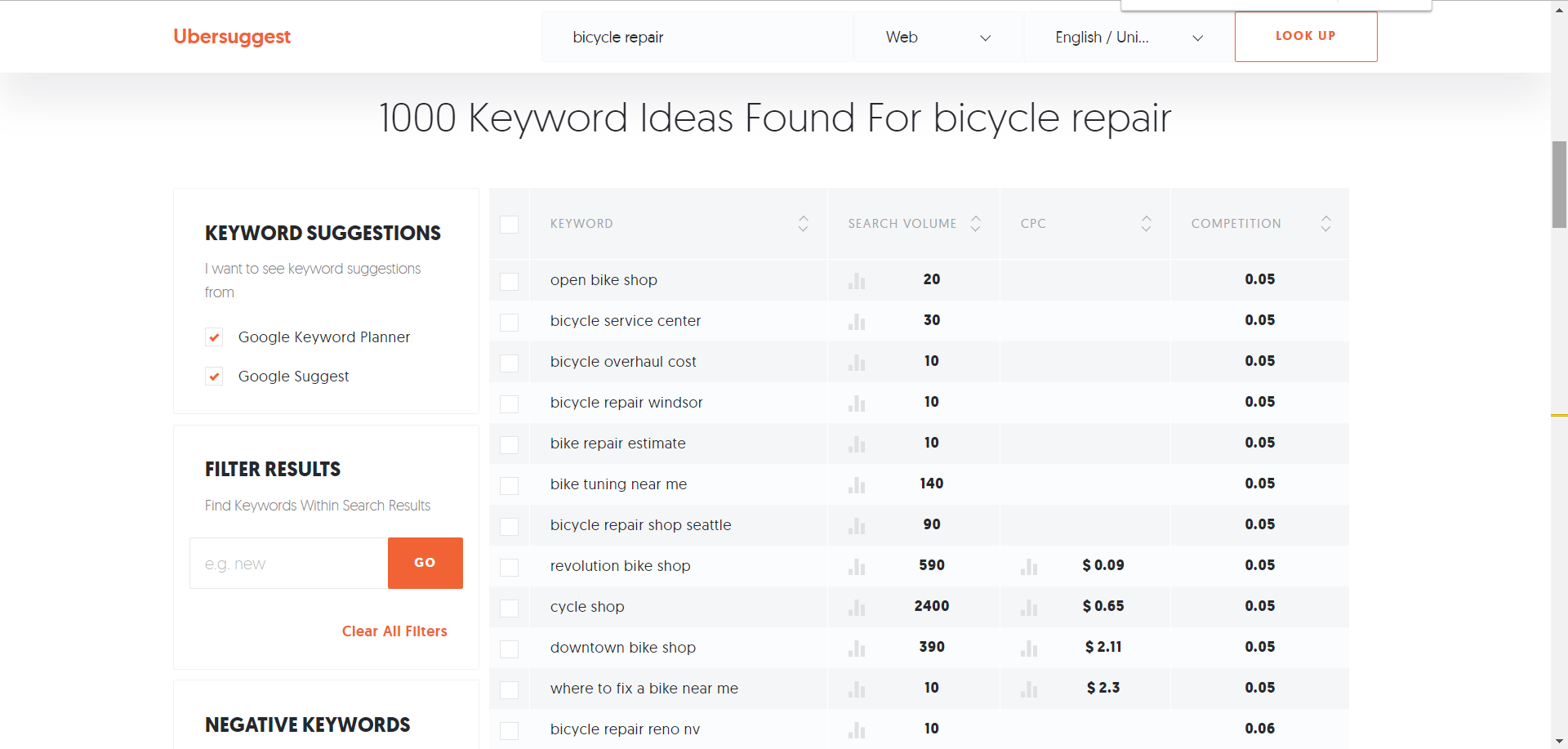
Skim through your results and chances are you’ll see at least a couple of keyword phrases that look promising in a few minutes.
Remember, it’s advisable that you opt for keywords that have high search volume and low competition. It’s also important that you prioritize “transactional keywords” in order to drive highly qualified leads (searchers who are more likely to buy).
Note: To generate transactional keywords, you can enter “buying terms” such as “cheap,” “best,” and “low price” on the Filter Results section on the lower right portion of the page.
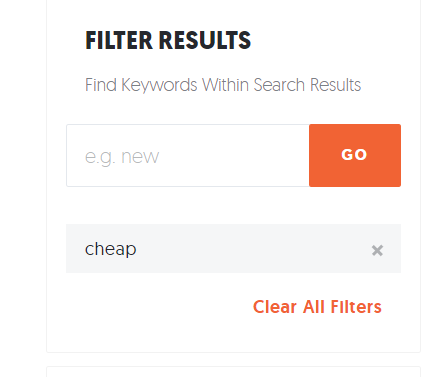
In our example, the keyword “bicycle repair shop near me” looks promising owing to its 6,600 search volume and low competition rating of 0.26.

“Cheap bicycle parts” has potential as well. It doesn’t offer much in terms of search volume (480) and level of competition (0.87), but the buying term “cheap” should come in handy in transactional searches.
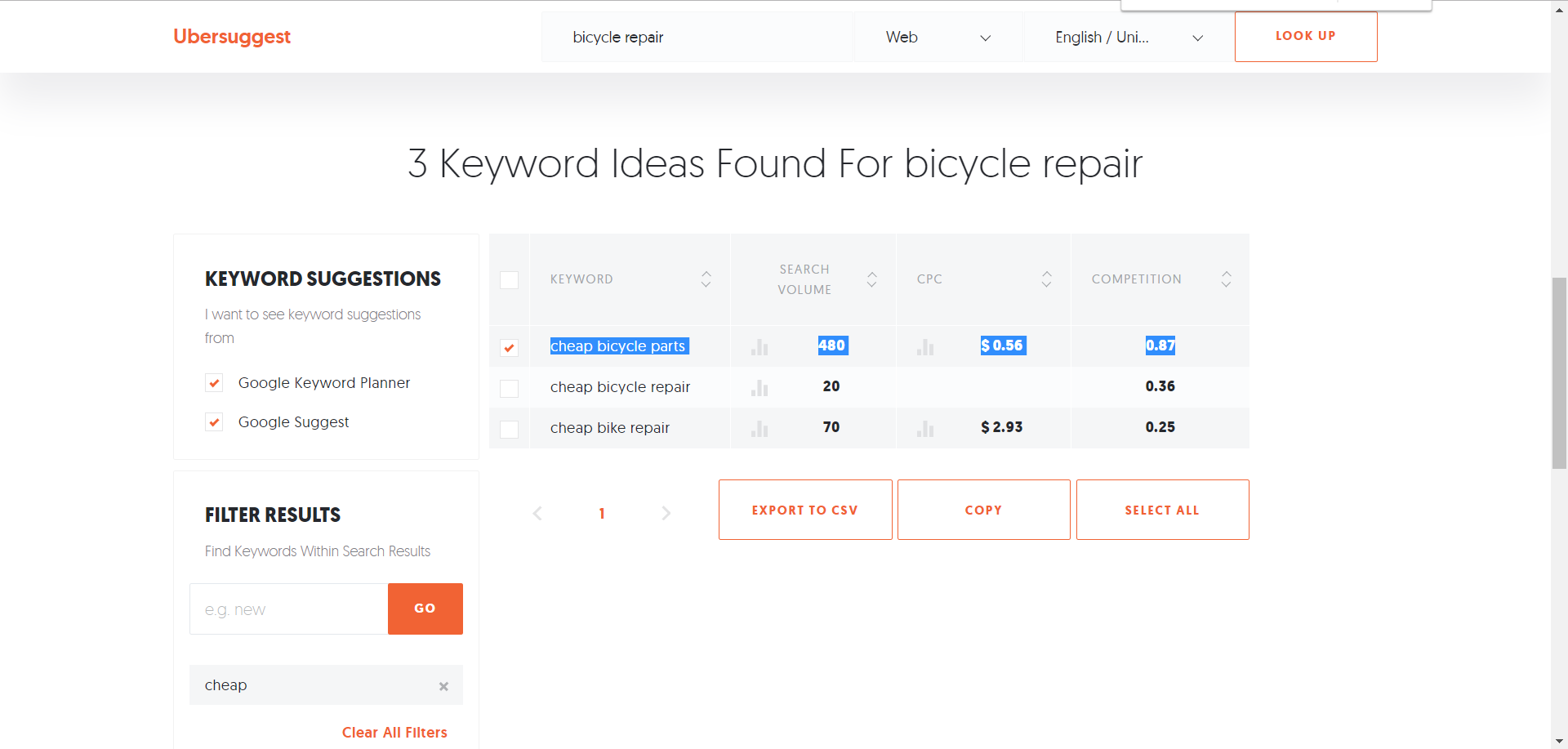
Additionally, considering that bicycle repair shops are by nature local businesses, it’s advisable that you also target localized keywords.
Interestingly, one of the most notable localized keyword suggestions that came up is “Oregon bike shop.” The keyword’s monthly search volume of 320 is nothing stellar, but it’s clear as day that there’s a thriving market for bicycle shops in the Oregon area (to remain consistent, let’s go ahead and pretend you own a bicycle shop in the area).

But here’s something cool: if you hover your mouse over the small graph icon to the left of the Volume results, you’ll notice that searches for the localized keyword have spiked from April until late August.
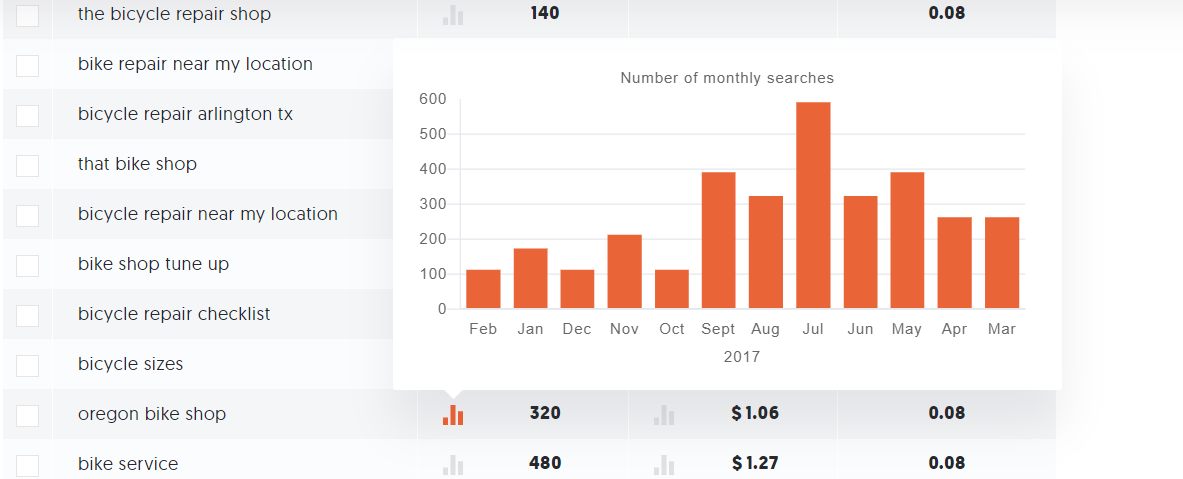
After some digging, it turns out that Portland, Oregon offers popular bicycle racing programs within that same period.
Apparently, owning a bicycle repair business in Oregon can be very profitable, even more so if you’re incorporating localized keyword research in your SEO strategy.
If that last example is any indication, Ubersuggest is also a useful tool for spotting localized or seasonal keywords. That’s pretty neat.
If you feel like you need to expand your seed keyword even further, then do so by all means. But for now, let’s stick with three keyword suggestions.
2. Examine Keyword Growth Potential
Effective SEO requires you to play the long game. As such, you need to check the growth potential of your top keywords in the following months.
Again, just simply hover your mouse pointer over the bar graph icon next to each keyword suggestion. This will show you each keyword’s monthly searches on a month-by-month basis.
Let’s do this for the keyword phrase “bicycle repair shop near me.”

Going by the bar graph above, the keyword phrase has a good amount of monthly searches the entire year, especially in the months July through September (summer months are the best months for cycling, after all).
If you can find a more profitable keyword than the one presented above, then go ahead and use that. But don’t forget to give the keyword phrase “bicycle repair shop near me” some consideration as soon as July comes around.
The second keyword phrase “cheap bicycle parts” is doing pretty well across the board. You can do no wrong with this one, especially if you want consistent traffic from potential customers who are on the budget.
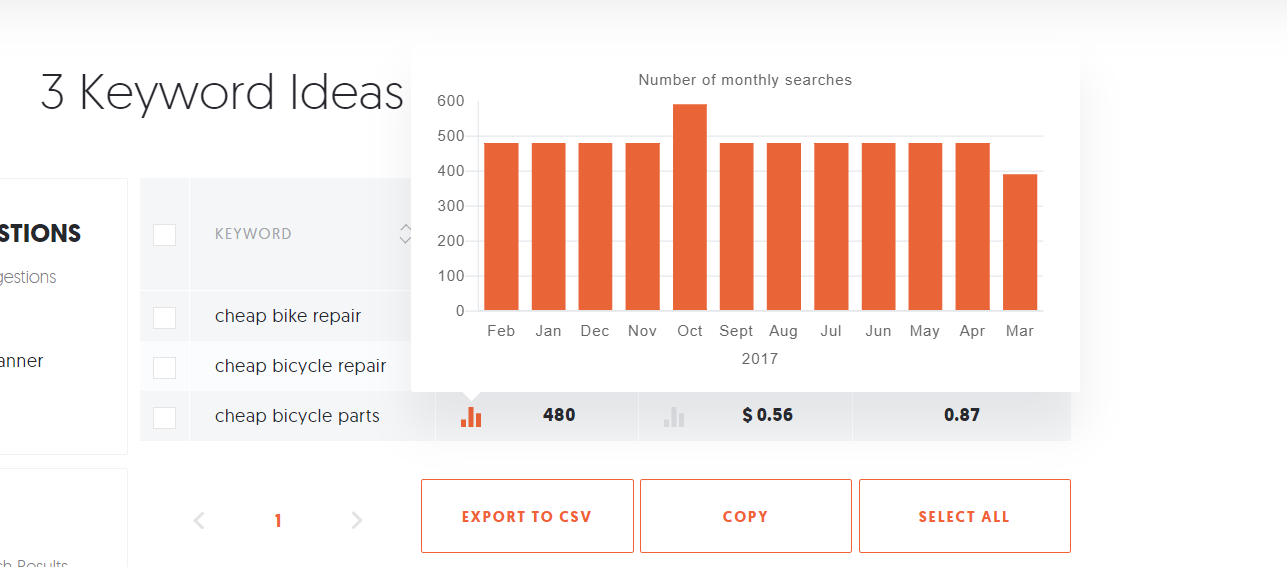
We already examined the growth potential of the keyword phrase “Oregon bike shop” in the previous section. Factoring that in, here’s what we have so far:

3. Check out the Competition
Now that you have three top keywords to focus your SEO efforts on, your next step is to examine the competition. It’s basically keyword research, Sun Tzu style.
It’s easy, and you don’t even need to use an agile tool to pull this off.
Just go to Google, do a quick search using your top keywords, and then check out the top-ranking websites that appear on the search engine results page.
After scouting your brand’s top competitors, what you need to do next is check your competitors’ content and then strive to create something better.
Remember, Google always provides users with the best content that’s relevant to their search query. By creating high-quality content related to the top keywords you’re targeting, you have a good chance of securing one of those top spots.
How did your keyword research go?
Were you able to find potentially profitable keywords in 30 minutes using the three steps above? With practice, you should be able to do all that in even less time.
When it comes to digital marketing, time is of the essence, which is why you need to work efficiently. After all, your competitors won’t hesitate to leave you in the dust in every opportunity. And to gain the competitive advantage, you need to use every resource and tool you can get.
Good luck and stay on the hunt for profitable keywords!